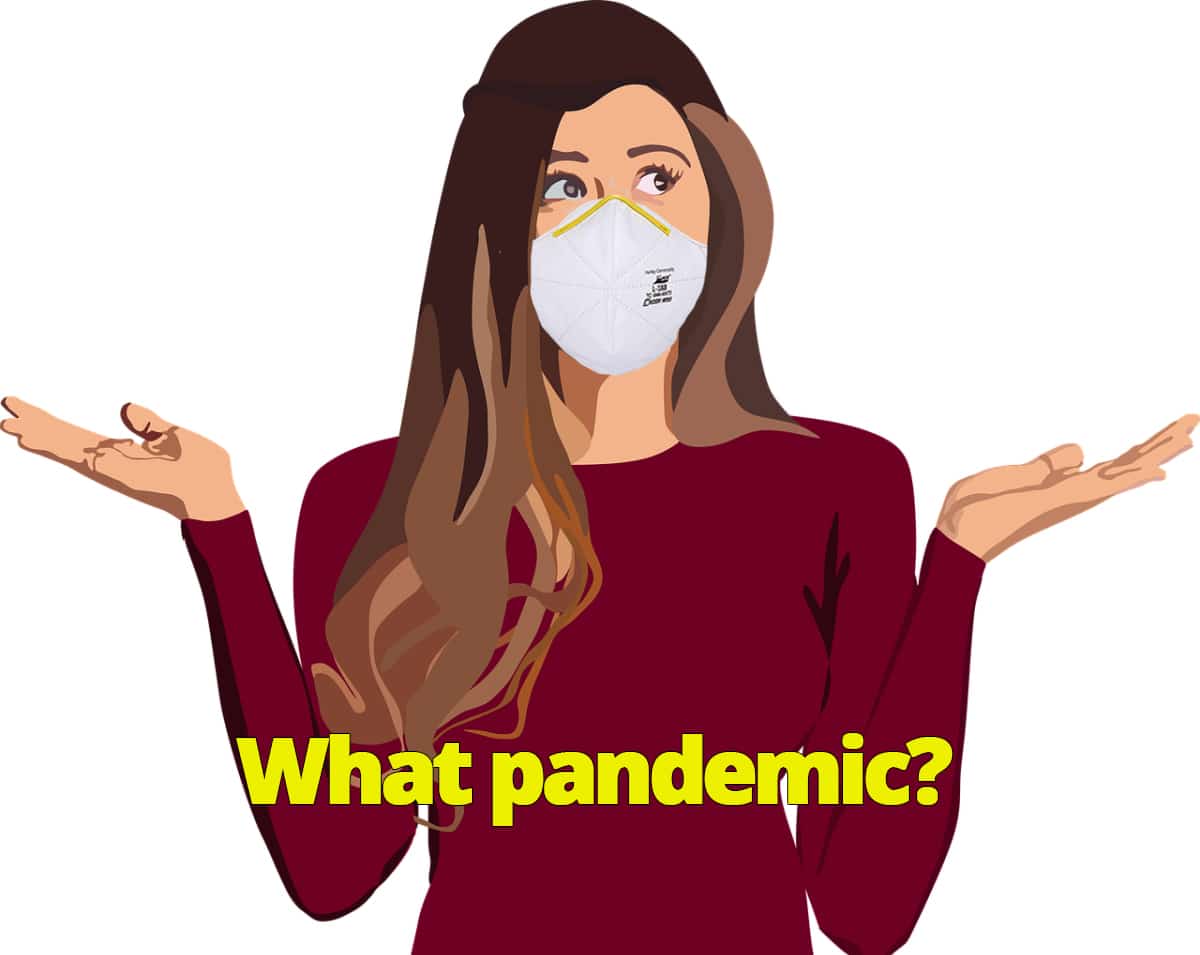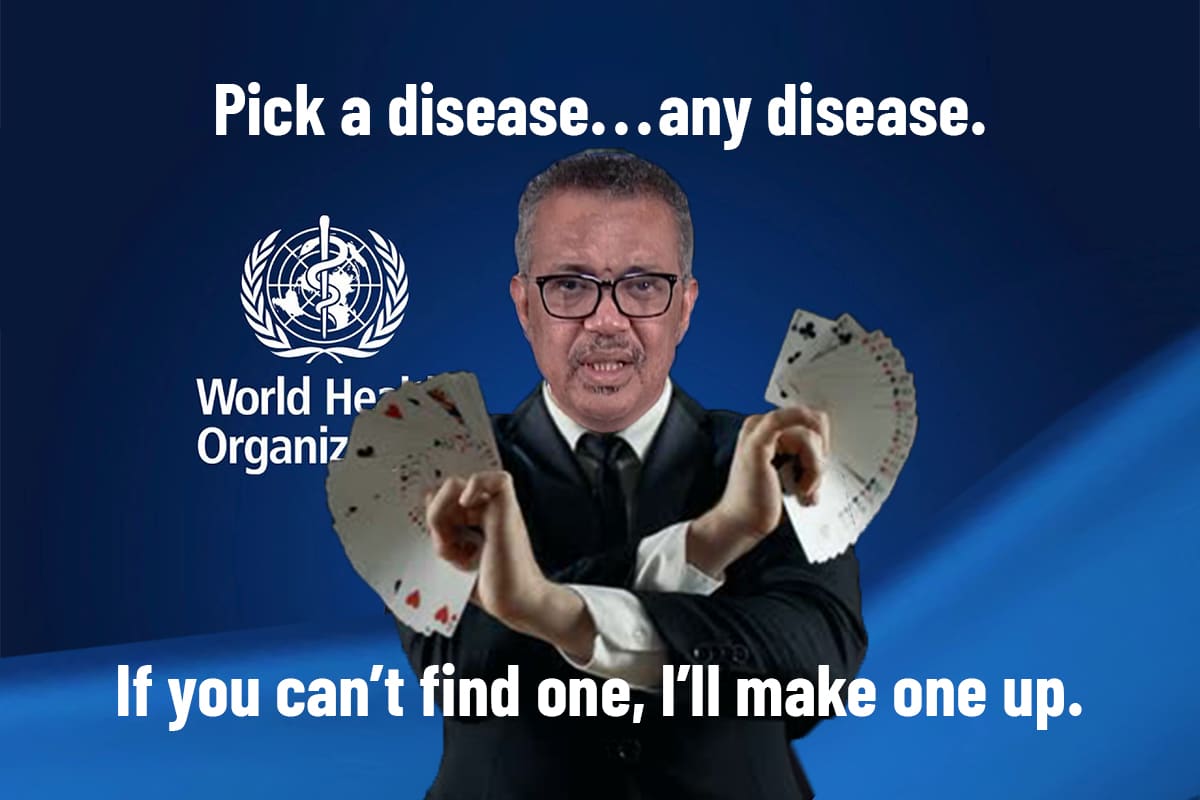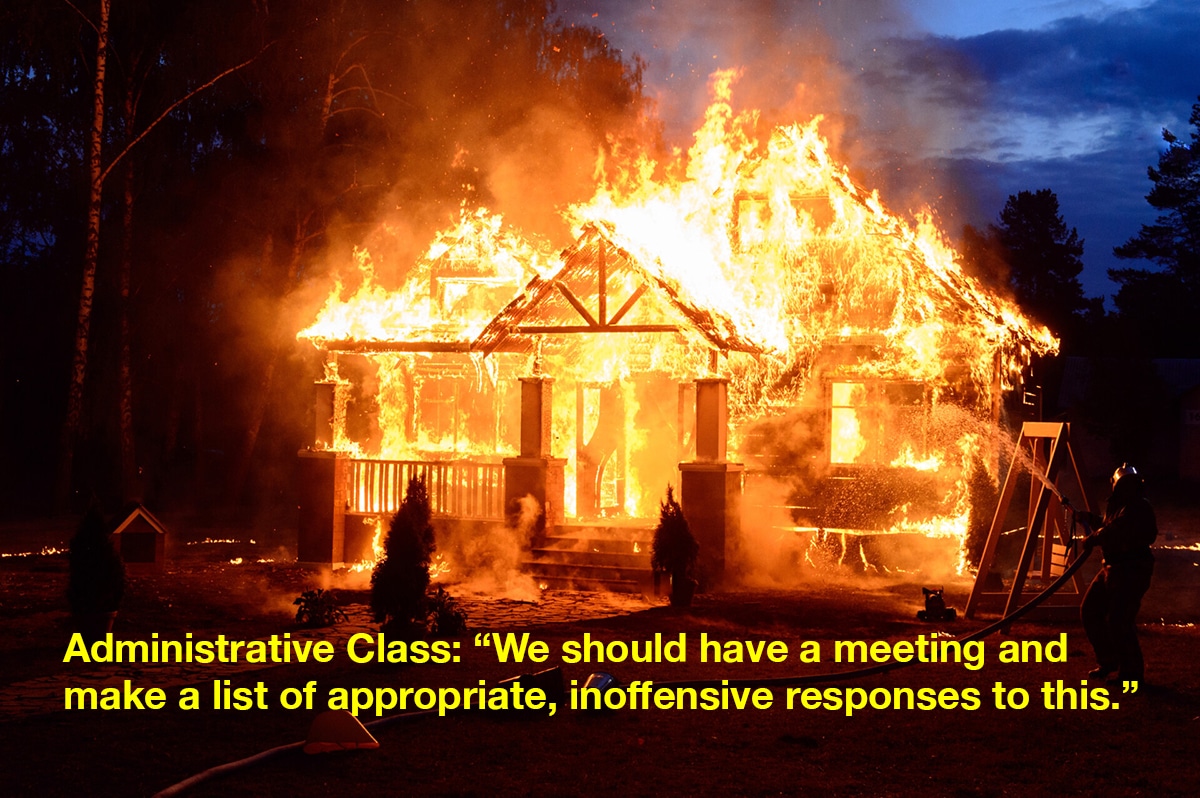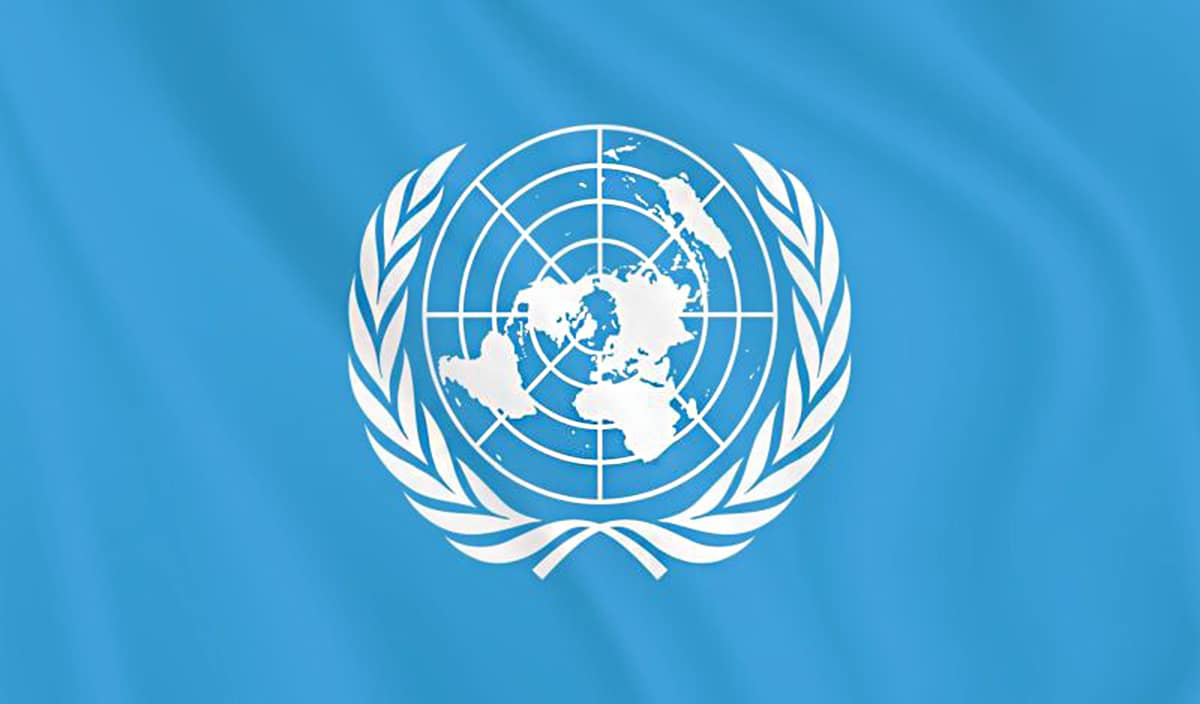

What Would Have Been the Best Way to Handle the Pandemic?
by A Midwestern Doctor | Jun 22, 2022
At this point in time, there is a widespread consensus that the pandemic has been massively mishandled. Many of these mistakes were patently obvious at the time they were made, but the minority who tried to prevent them for all practical purposes was powerless to stop this train wreck.
As best as I can gather, the WHO and related organizations are currently planning to have numerous successive pandemics after this one and to prolong COVID-19 for as long as possible. Because of this, I believe it is critically important to examine some of the mistakes that were made in this pandemic response so that we can avoid repeating them over the next decade.
In this series I will summarize the individual and institutional pandemic policies that were made, and alternative policies I believe would have better accomplished their goals.
Public Compliance Campaigns
Public relations is the invisible industry that shapes every facet of our culture, and once you learn how to spot it, everything becomes cast in a different light. One of the first articles here was an exposé of that propaganda industry and that article (along with a follow-up regarding Will Smith’s recent performance at the Oscars) provides invaluable context to further understand this section.
Every now and then, a propaganda campaign comes along that everyone is encouraged to participate in. Frequently, the objective of these campaigns is not the direct result of the participants actions, but rather behavioral modification to make the participants become invested in the policy related to the campaign because of the work they put into supporting it. This is a common application of cognitive dissonance as human beings tend to become psychologically invested in anything they put work into; a related application of cognitive dissonance helps to explain why doctors collectively deny the possibility of medical injuries.
I will share a few examples of these compliance campaigns (note: they may be an existing terminology for this form of propaganda, but try as I may, I was unable to recall it):
World War II Scrap Drives: During World War II, to address shortages of critical suppliers for the war effort, civilians were encouraged to do large campaigns to collect as many raw materials as possible (these were ultimately referred to as scrap drives). Children for instance would scour their cities looking for old metal cans they could give to the war effort.
The problem what is that most of the materials they collected were completely useless. Nonetheless, widespread public participation in the scrap drives boosted morale and support for the war effort overseas.
School Children in Afghanistan: The Afghanistan war was a terrible idea which was primarily done for war profiteering at the expense of the American taxpayer, our soldiers and the people of Afghanistan. This is a personal issue for me as I had close friends from Afghanistan and other friends stationed there that directly witnessed continual war profiteering and exploitation of the Afghani people.
One of the many victims of the war were the school children. During Bush’s presidency, his administration had the wonderful idea to encourage children of America to each donate a dollar to the children of Afghanistan. This campaign resulted in a negligible amount of money being donated to Afghanistan, but successfully convince large portions of the public to ignore the war crimes that were continually occurring. This 2001 article advocating for the donation campaign is a perfect summary of this form of propaganda and is essential reading for anyone seeking to understand these operations. Subsequent similar drives (such as for school supplies) also occurred throughout Bush’s presidency.
Deepwater Horizon Oil Spill: The devastating 2010 Gulf of Mexico oil spill was portrayed as an unprecedented disaster no one could have anticipated. In reality, BP has been warned their drilling method would cause the disaster that happened, and BP had previously had the exact same thing occur a year before in Azerbaijan (for those interested, this is a 10 minute exposé of what happened in Azerbaijan).
When the spill happened, BP engaged in a variety of PR campaigns to deflect outrage from the company (best synopsized by South Park) and conducted various token efforts to make it appear they were responsibly handling the environmental disaster, such as hiring teams of workers to slowly remove oil from beaches along miniscule sections of the gulf coastline.
One of the campaigns that was conducted was a drive to donate as much hair as possible (as oil sticks to hair) so this could be used to “save the gulf.” This seemed odd to me as straw bales served the same function hair did, but were significantly more suited to the job, less messy and infinitely easier to obtain the needed quantities of. Ultimately, none of the hair was used (warehouses of hair were collected) and BP went with traditional oil boons as these were far superior to human hair.
COVID Compliance Campaigns
As I began to watch the pandemic mitigation policies, I realized none of the policies that could prevent the spread of the pandemic were being enacted, and instead token mitigation efforts were being enacted to create mass social compliance with pandemic industry that had sprung up overnight. Most of these policies arose from the CDC’s guidelines for pandemic prevention (the evolution of which can be viewed here through the internet archive).
•Compulsive Handwashing: The CDC and many other organizations regularly released guidelines that you should properly wash your hands for 20 seconds as frequently as possible. The problem with this is that COVID-19 was never shown to spread through hands contacting contaminated surfaces. A few physicians pointed this out from the get-go, and by early 2021, Nature one of the top scientific journals had admitted this was the case.
Nonetheless, compulsive handwashing became a fixture of the pandemic response. Reminders to wash your hands were everywhere. Individuals were regularly chastised or reprimanded for failing to continually wash their hands for 20 seconds, and before long every surface was being regularly disinfected.
A common feature of obsessive-compulsive disorder is a tendency to compulsively wash one’s hands (sometimes to the point the skin is damaged). Since individuals with similar neurotic conditions became one of the demographics most behind the pandemic response, I have often wondered if the hand-washing campaign for pandemic compliance was specifically chosen to recruit the neurotic members of society to fight for the pandemic policies.
•Social Distancing: The 6-foot rule distancing rule was complete arbitrary. This 3/21/21 editorial by Scott Gottlieb, a recent FDA commissioner and current Pfizer board member summarizes the key points:
•There is no evidence for social distancing reducing the spread of COVID-19.
•No one is sure where the recommendation came from (note: I remember hearing at one point Fauci made them up out of thin air, but was unable to locate the source for this article).
•The rule likely arose from knowledge respiratory droplets spread approximately 6 feet, but was not revised once it was discovered the virus was aerosolized (which completely invalidates the 6 foot rule).
•Massive economic and social harms arose from social distancing policies.
Social distancing became an enforced social ritual the populace (particularly the pro-mandate demographic) complied with and was particularly absurd when it was extended to outdoor spaces. The mass compliance to social distancing set the stage for the more damaging pandemic policies such as the lockdowns and the “solution” to that made up problem: vaccinations.
Books can be written on the harms of this policy, particularly to children, so I cannot even begin to do it justice here. One thing I often thought about during the pandemic I am sure many of you can relate to was how fortunate I was to have to have been with my spouse before the pandemic started; many people I knew reported atrocious difficulties dating and crippling loneliness during this period.
•Masking: It may surprise many of you, but I was one of the first people to wear masks in public spaces during the pandemic and in April of 2020, I supplied PPE to colleagues who had previously made fun of me for masking when their supply ran out. I also abandoned wearing masks a few months later (excluding while working with patients who had Covid). My rationale was that I did not want to mask and I was fundamentally not willing to permanently alter my life to the degree that would be required to prevent ever getting Covid, but based on the early reports from overseas, I viewed the virus as being exceedingly dangerous and wanted to minimize my risk of getting until I felt confident treating it (which took a few months to figure out).
The fundamental issue with the masking policies were:
•Regular masking has some use in reducing droplet spread but is useless for reducing aerosol spread.
•Once it was discovered the virus aerosolized, these recommendations were never revised-rather the advocates doubled down for double masking and to my great surprise, some eventually tripled down.
•N95 masks do to some extent reduce aerosol spread, but without a complex program to overhaul America’s industrial manufacturing infrastructure, there was no realistic way to provide the number needed for the population. This is a large part of why we received so many mixed messages on masking. What truly amazed me was seeing the WHO give a public presentation at the start of the pandemic stating their priority would be to preserve PPE for healthcare workers, and then within a few days watch leaders around the world including Fauci suddenly state there is no reason whatsoever to wear masks.
•There are a variety of significant physical and psychological harms that arose from masking. Overall, the most problematic issue I’ve identified came from researchers who had monitored children for years identifying a drop from 100 to 78 in the average IQ of children born during the pandemic (which was most likely due to social isolation and facial expressions concealed through masking).
To quantify the impact of a 22-point drop: “An IQ of 70-85 is the threshold for borderline intellectual functioning and is technically a cognitive impairment, but the deficit is not as severe as intellectual disability and this group may hence not be sufficiently mentally disabled to be eligible for specialized services. During school years, these individuals are often “slow learners” and a large percentage of this group fails to complete high school. As a result, many can often achieve only a low socioeconomic status, and most adults in this group blend in with the rest of the population.”
While there were many systemic failings to the pandemic response I have come to terms with, it still is difficult for me to believe almost no one realized the alterations in childhood intellectual development was a critical red flag with profound consequences for the lower classes. This problem is particularly insidious because the researchers discovered the IQ drop disproportionately affected those of a lower socioeconomic class (presumably because they lacked the resources to mitigate the effect of the pandemic on their child rearing).
Even though the droplet spreading myth has been thoroughly debunked, most of the public health apparatus has been unwilling to let this pseudoscientific dogma go, and as a result both masking and socially distancing are still continually recommended by these authorities.
In a recent article, I attempted to illustrate the most absurd application of this misinformation, and cited numerous examples of health “authorities” instructing sexual partners to only engage in sexual activity online. These guidelines also stated that if sexual partners absolutely had to be together, it was advised to engage in sexual activities from a distance of at least 6 feet from each other, and if they absolutely must have intercourse to wear a mask and strongly consider having a wall between them. This video of Kamala Harris is one of many example of how officials stoked the droplet hysteria:
•Lockdowns: Oftentimes bad government policies that fail (such as social distancing) will be replaced with worse policies that are even more disastrous. The primary thing that was not appreciated about the lockdowns was that there was only one possible scenario where they could work for a contagious respiratory disease: lockdowns at the very start of the epidemic to contain the virus before it spread into the population.
Since there was political opposition to containing the virus within China while there was still a potential window to contain do it, this never happened and the ensuing lockdowns were an exercise in futility. The was demonstrated by countries who opted against these measures such as Sweden doing as well or better than countries with lockdowns. Unfortunately, while the lockdowns had minimal epidemiological value (to be clear they did not save lives) the lockdowns were profoundly devastating to the population, particularly those of lower socioeconomic status who did not have the luxury to work at home.
•Testing: There were three major flaws with the testing program that was enacted:
•There was no access to at home tests individuals could use to assess their COVID-19 status.
•The PCR tests were poorly designed.
•The poor design of the PCR tests resulted in them getting a very high number of false positives.
As a result, the primary function of the tests was political rather that epidemiological: anywhere the tests were done would register large number of cases, and “outbreaks” became a consequence of how many tests were performed rather than the presence of disease within the tested area.
This compliance campaign yielded 3 key results:
•The ritual of getting tested (the long lines, the biohazard suits worn by testers, and the torturous testing process) established the message that the pandemic was deadly, that we were all in it together, and that we each had to suffer through it to stop this plague.
•Outbreaks could be fabricated at the drop of a hat by testing as many people as possible.
•Outbreaks could then be used to justify the other absurd pandemic policies and keeping the entire fear machine running.
I personally avoided the tests for three key reasons:
•I felt they had no medical value if you were asymptomatic.
•I had a strong suspicion the PCR testing was being done to collect a DNA database of the country (to some extent this has proven true).
•I had two friends who were seriously injured by a nasal swab.
•Temperature checks: On the surface, I thought these were a very good idea (I advocated for them to my hospital at the very start of the pandemic), because a fever was the symptom most consistently associated with COVID-19. The problem was that forehead infrared temperature checks are completely useless, and almost all temperatures were checked in this way rather than inside the mouth.
The forehead temperatures are heavily influenced by the environment and are not reflective of internal body temperature. Typically (as it is normally colder than 98.6 degrees outside), the forehead temperature is significantly lower than your internal body temperature. Conversely in all cases where I have failed numerous temperature checks, it was because I walked outside in the heat prior to a temperature check, and my internal temperature at the time was actually normal. Most importantly, I have seen countless people with COVID who did not have an elevated forehead temperature.
In short, the ritual of everyone getting a temperature check was designed to create the false psychological security for everyone they were being protected from COVID and to once again create a climate of fear around the virus.
I also believe if guidelines had been developed to significantly lower the threshold for a potentially abnormal temperature (that were also calibrated to the temperature of the external environment) and to have individuals meeting that threshold then need a second temperature check from inside of the mouth, the value of this screening method could have been significantly improved. However, as the purpose of this campaign appeared to have been primarily psychological, like many other things, this was never done.
•Vaccinations: Initially, relentless promotion of Flu shots to prevent COVID-19 was a cornerstone of the pandemic response (despite influenza vaccinations increasing rather than decreasing your risk of a severe illness from COVID-19). Before long it became clear every part of the pandemic response would arrive at advocating for mass Covid vaccination. The problem was that, as detailed in this article, it was known from the start mass vaccination could not address the pandemic and would likely only serve to make it worse.
However despite this nonsensical approach being at odds with reality, the entire social apparatus got behind it and we witnessed the most aggressive propaganda campaign in history (detailed here). “Ending the pandemic” or “saving lives” was reframed in the minds of many well-intentioned people as doing everything they could to manipulate their fellow Americans into getting vaccinated. If you think back to the entire vaccination rollout process, it is also noteworthy of how many compliance campaigns were woven into it.
Like many of you, I avoided the vaccinations because I was relatively sure they would quite dangerous (although I never imagined just how dangerous they would prove to be). As I was comfortable treating COVID by the time of the rollout, I also felt there was no need for me to vaccinate.
The California Doctors
Early in the pandemic, two California ER doctors held a press conference to explain why the CDC’s approach for addressing the pandemic was unlikely to work and that the lockdowns had a massive human cost. The conference got some traction in the conservative media and was universally despised within the liberal media. Because everything these doctors said was subsequently proven to be true, this is an important historical record to watch (that of course was pulled from youtube).
I try to consider all sides of each argument, so I often silently observe discussions that occur amongst conventional (left leaning) colleagues. When the California doctors gave their statement to the press, I saw numerous physicians blow a gasket and I heard many angry condemnations of these doctors stating their reckless behavior endangering public safety should cause their licenses to be revoked (along with a variety of more petty reprisals directed against the doctors).
One of the most memorable criticisms I heard was that the doctors were clearly opposing the lockdown to get more business for their urgent care and had a profoundly unethical if not illegal conflict of interest to their recommendations. Given how minimally the lockdowns affected their business and how profoundly corrupt the biomedical profiteering that shaped the entire pandemic response was, I never forgot this argument.
Not long after I learned a letter writing campaign to the specialty colleges of these doctors had been successfully conducted; in an unprecedented move, an urgent statement had been released by these medical organizations shortly after the California doctor’s press conference:
Recently, The American Academy of Emergency Medicine (AAEM) and the American College of Emergency Physicians (ACEP) released a statement that said the two organizations “jointly and emphatically condemn the recent opinions released by Dr. Daniel Erickson and Dr. Artin Massihi. These reckless and untested musings do not speak for medical society and are inconsistent with current science and epidemiology regarding COVID-19. As owners of local urgent care clinics, it appears these two individuals are releasing biased, non-peer reviewed data to advance their personal financial interests without regard for the public’s health.”
The statement was ultimately meaningless (no sanctions came to the doctors) but it was used by the media to discredit their argument. I never participated in the discussions in this group so I have likely missed much of what arose, but as far as I remember, that was the only time this physician collaboration came together to do something in the real world or the pandemic response.
About a year ago I read a study that was posted on Scott Adam’s twitter I have since been unable to find (please send my way if you have it!) which stated that members of high-status groups which take a significant investment to join (in other words the professional class such as doctors and lawyers) tend to be highly susceptible to radical members in their group guiding the direction of their profession because the established members of the profession are unwilling to risk jeopardizing the status they had worked so hard to earn by challenging these radicals.
This particularly problematic in the medical field because pharmaceutical money is always used to create these radicals and they often push very bad medical policies.
Concluding Thoughts on the Covid Compliance Campaign
As this article shows, much of the COVID-19 pandemic response would best be described as theater. I have talked with personal friends who are administrators while petitioning an end to mask mandates, and was told verbatim: “we know there is no point in masking, but we have to make it look like the organization is doing something.” This theatrical approach is particularly insidious because much better response options were available but not utilized
In various documents I have read over the years originating out of think tanks (which often become the basis for future government policy) I have noticed a continual theme espoused is the need for a “war” to maintain social cohesion and governmental stability. Since large scale wars are no longer practical for nuclear powers to engage in, abstract have become the default approach.
Some wars (i.e. on cancer or drugs) made a lot of money but didn’t really succeed in the goal of maintaining social cohesion, while others such as terrorism worked for about a decade before the public got sick of them. A war on an infectious disease was always viewed as the other great candidate for a war, and as best as I can gather, we finally cycled into it once another war was needed and no other option was available. Since the war was fabricated for the purpose of engineering social compliance, it likewise makes sense why each method adopted for mitigating it revolved around conditioning behavior rather than addressing the actual pandemic. Hence, we are now stuck with the development of a Biosecurity state which will do everything it can to prevent ever letting itself to go away.
In the next section of this series, I will discuss the approaches I believe should have been conducted to handle the pandemic.




